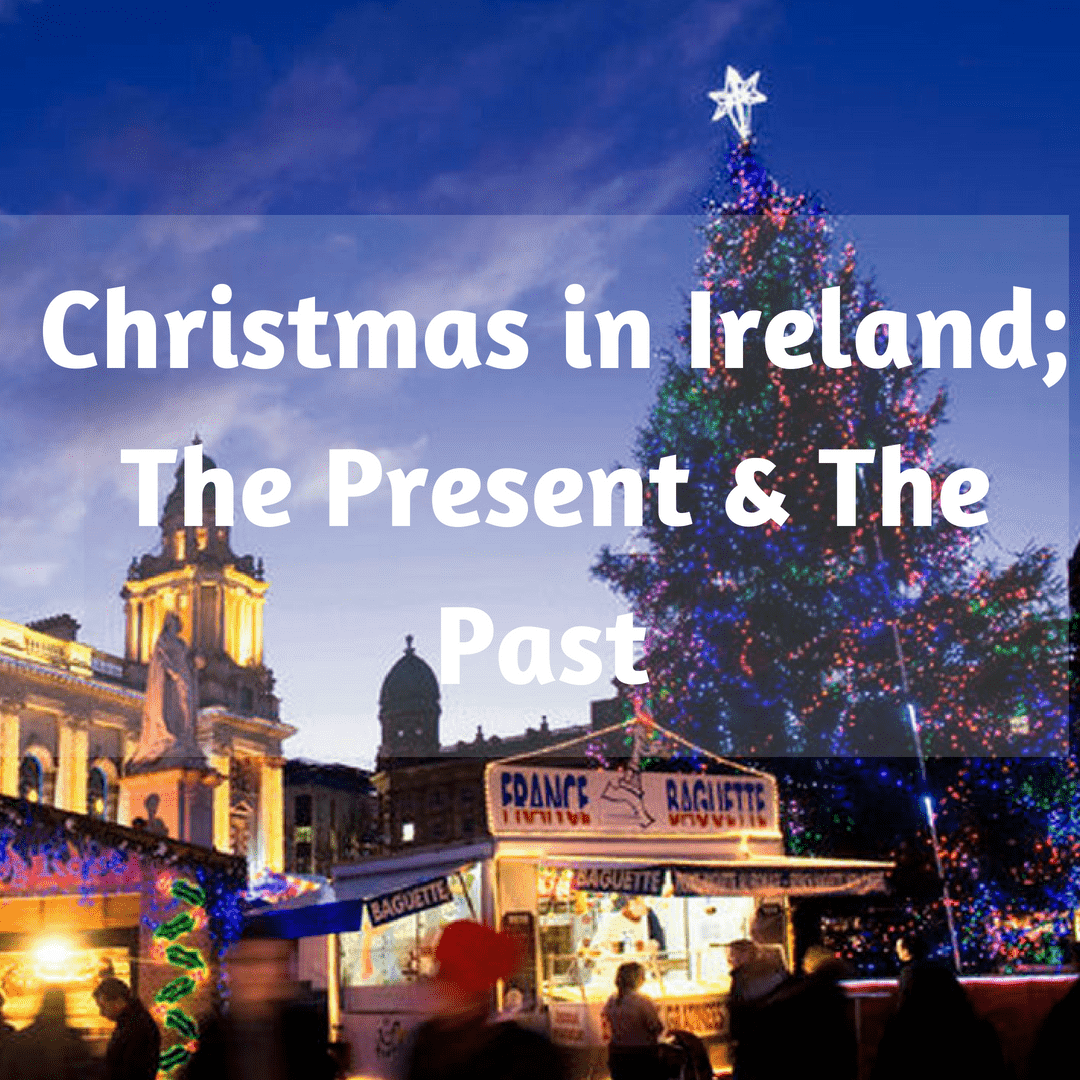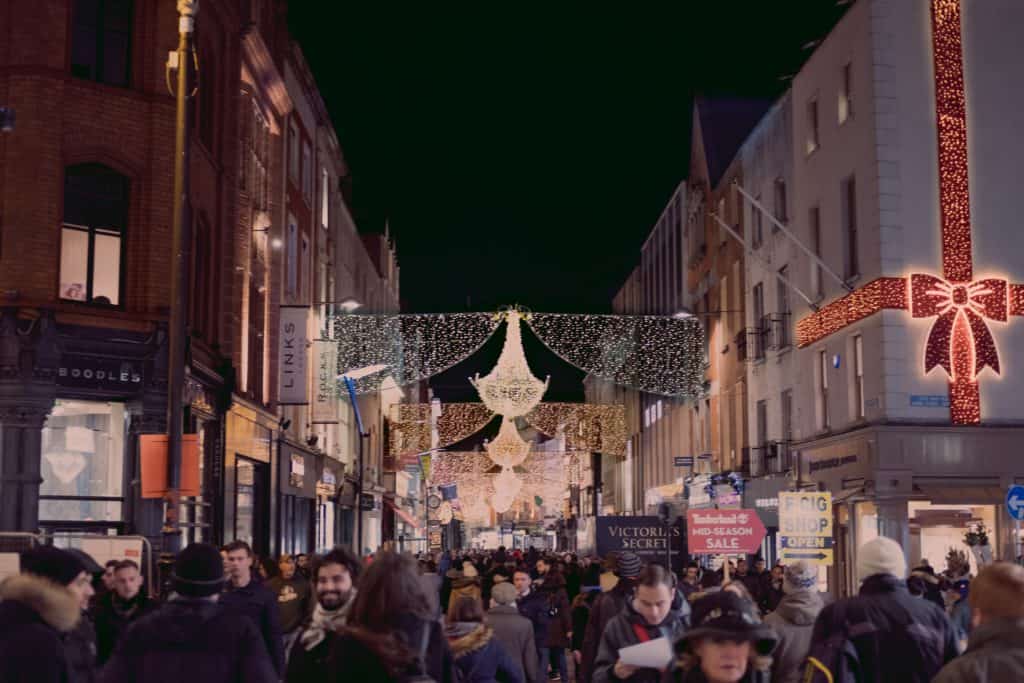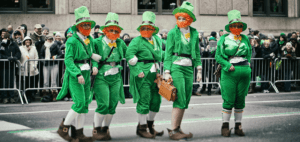Christmas in Ireland Through the Present and the Past

Updated On: April 07, 2024 by Salma Ihab
Winter lands upon our places, and celebrations await us. Despite the blazing weather, we all passionately greet this season for the festivity it associates with. All it takes for a cheerful atmosphere to take over is for December to arrive. You start listing the new resolutions for the upcoming year and prepare for the Christmas holiday. Every one of us appreciates holidays; they are times when we rest our bushed minds for a while. However, Christmas has always been warm in our hearts since childhood. Celebrating this time is always entertaining; it is a joint celebration worldwide. On the other hand, Christmas in Ireland is a bit different. Indeed, it shares similarities with other cultures, yet there are significant differences. Every culture has its traditions and customs, and Ireland is no exception.
The Beginning of Christmas in Ireland

Well, no matter where you are or come from, you will recognize when Christmas starts. The streets start taking that festive theme, and everyone decorates their house with the proper ornaments. You start to feel the breeze of the holiday everywhere you go, and you won’t help but smile. People worldwide wait for Christmas as soon as October ends, especially when Halloween is over. Everyone is always looking forward to celebrating something now and then. Still, worldwide, Christmas starts by the end of December despite the long wait.
On the other hand, Christmas in Ireland comes earlier than the rest of the world. They are early birds. Irish people celebrate before the rest of the world as soon as December arrives. Christmas in Ireland begins on 8 December and lasts until the beginning of the New Year. It is both the longest and largest celebration for the Irish people. It’s pretty similar to most Western countries’ traditions regarding decorations, shopping, and erecting trees.
A Long Holiday
On Christmas Eve, the entire workforce in Ireland ends until the holiday is over. People start performing their plans by lunchtime. The work resumes after New Year’s Day. Although the workforce temporarily shuts down, some shops and public services remain to carry out the Christmas sales.
St. Stephen’s Day: The Day After Christmas
Christmas in Ireland is not different from that around the world regarding celebration. But, Irish people seem to be fond of celebrations more than their fellow cultures. Ireland has a new celebration: St. Stephen’s Day, one day after Christmas. Very few cultures, including Ireland, celebrate this day on 26 December. However, different cultures refer to it as the Boxing Day. Countries that celebrate this day are Ireland, South Africa, the United Kingdom, Germany, Canada, New Zealand, and Australia. The day has different names according to each culture. For example, Ireland calls it St. Stephen’s Day, while England calls it Boxing Day. Moreover, Germany refers to this day as Zweite Feiertag, the second celebration.
Today, people have started collecting boxes containing beneficial stuff for the poor. They keep the boxes in churches where they open them and distribute the goods to the poor. This idea started around the Middle Ages. Some sources claim that the idea belonged to the Romans, and they brought it to the United Kingdom. Over and beyond, the Romans used those boxes to collect money for the betting games of winter. They used them during their winter celebrations instead of charity work.
Wren Boy Procession
There are abundant small birds around Ireland and the United Kingdom, such as the wrens. They are the smallest birds in the towns. Wrens have loud singing voices that escort people to call them the Kings of all birds. During medieval times, European people hunted this bird for many years. There was even a legend about the wren that people kept telling for a long time. This legend narrates the tale of a wren that sat on an eagle’s head while flying and bragged about out-flying the eagle.
Among the celebration traditions of Christmas in Ireland lies the Wren Boys Procession. It is a very old tradition that people perform on St. Stephen’s Day. The tradition is about killing an actual wren and carrying it around while singing a specific rhyme. While laying the dead wren in a holly bush, men and women roam around in homemade costumes. They go from one house to another, singing and playing with violins, horns, and harmonicas. The Wren Boys Procession has disappeared since the early 20th; however, some towns still perform some of the traditions until now.
The Relation Between Christmas in Ireland and Religion
According to the Irish mythology, Christianity arrived in Ireland along with Saint Patrick. Ever since, the country has become predominantly Christian. The dominance of this religion leaves an expansive room for Christmas to play an important role in Ireland. On Christmas Day and Christmas Eve, people attend churches for religious services. Roman Catholics also perform a Midnight Mass and take time to remember the deceased souls with prayers. Additionally, they also decorate graves with holly and ivy wreaths on Christmas. It’s the Irish people’s way of showing that the deceased people are never forgotten.
The Burning Candles of Christmas in Ireland
Like many countries worldwide, Irish people care to decorate their houses for Christmas. They decorate their houses with traditional cribs as well as Christmas trees. Besides, people provide and receive gifts from one another. As much as they share similarities with Christmas celebrations worldwide, they have their differences, too. In Old Ireland, people used to light candles and leave them on their windows ledge on Christmas Eve after sunset. The burning candle signifies that this house welcomes the hospitality of Jesus’s parents, Mary and Joseph.
The Feast of Epiphany in Ireland
With the arrival of the New Year, people have more than one thing to celebrate. They celebrate the New Year, the rest of the Christmas Holiday, and the Feast of Epiphany. It takes place on 6 January; Irish people call it Nollaig na mBean. Over and beyond some people call it the Women’s Christmas. The reason behind that name is that women take this day off; they neither cook nor do any chores. Instead, men do all of the housework while their women hang out to chat with their friends. Christmas in Ireland nowadays may not include this tradition anymore. However, some women still like to gather outdoors and enjoy each other’s company.
Other Traditions of Christmas in Ireland
Again, celebrating Christmas in Ireland is not that different from the rest of the world. However, every culture has its themes and customs, and Ireland is no exception. It shares some similarities and has its differences in celebrations. For example, Santa Claus is a global symbol of Christmas worldwide. Ireland celebrates this by having its Irish Santa distribute gifts to the little ones on holiday. He also played a part in the Irish legends by being the first to hire leprechauns and introduce their species to the world.
The Story of Santa Claus and the Leprechauns
Leprechauns are famous fairies in the Irish legends. Christmas in Ireland had a lot to do with them, too. They used to live in the lands of elves and hobbits. Later, Santa Claus invited them to the North Pole for cleverness in craftwork so they could work in his factory. They left for the North Pole and worked at a toy factory.
While there, the leprechauns’ troublemaking nature took over. They hid the toys in a secret place while the elves were asleep. They kept laughing about it, thinking it was all fun and games. A storm hit the place the following day, and all the toys turned into ashes. Christmas Eve was only a few days away, so Santa Claus had no time to make more toys. He wouldn’t be able to deliver them on time. Thus, he exiled the leprechauns for good, and they were bullied by every creature. Not only because of what they did but also because their appearance was unusual.
Dinner of Christmas in Ireland
Celebrations always mean food. People around the world love to celebrate by indulging in particular meals. Christmas in Ireland includes food, too; every house has an enormous feast. Some people claim that the meals cooked on Christmas in Ireland are more significant than all meals cooked throughout the year. It would help if you had large portions of food and different types to feast on food.
Traditional Food for Christmas in Ireland
On Christmas Eve, every household starts preparing a huge dinner. They cook turkey and prepare vegetables alongside an extensive list of other goodies. Irish people celebrate with their Irish dinner, which includes homemade mince pies and Christmas pudding. For the rest of the meal, you can binge on turkey, potatoes, different veggies, chicken, hand, and stuffed goods. These traditions have been trending for ages; however, in modern times, there are slight differences. A Selection Box is part of the Christmas dinner; a box full of chocolate bars children enjoy. Irish people are strict about having dinner before going to the chocolate bar.
Christmas in Ireland is about gathering and enjoying the holiday with family and friends. For some entertainment, people either stay home and watch the finest Christmas movies or go shopping at the Grafton Streets. It is when everyone is happy, and the lost souls are remembered.
Don’t forget to check out related blogs about Ireland that might interest you: The Globally Celebrated St.Patricks Day| Irish Wedding Traditions| Dive into the Finest Legends and Tales of Irish Mythology| Digging into the Secrets of Irish Pookas| History of Gaelic Ireland Throughout the Centuries|






